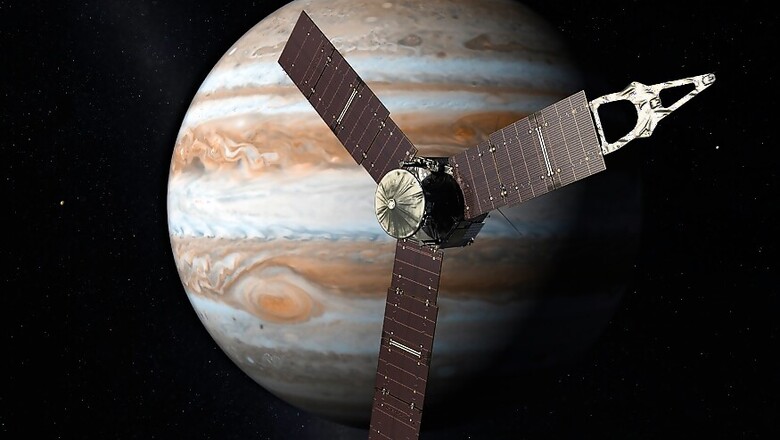
views
NASA's Juno spacecraft is set to make its fourth flyby over Jupiter's mysterious cloud tops on Thursday at 4.57 a.m., a statement said.
At the time of its closest approach (called perijove), Juno will be about 4,300 km above the planet's cloud tops and travelling at a speed of about 57.8 km per second relative to the gas giant, the US space agency said in a statement.
All of Juno's eight science instruments, including the Jovian Infrared Auroral Mapper (JIRAM) instrument, will be on and collecting data during the flyby that will take place at 6:27 p.m. India time.
"With every close flyby we are finding something new," said Scott Bolton, principal investigator of Juno from the Southwest Research Institute in San Antonio.
The Juno science team continues to analyse returns from previous flybys.Also read: Evidence of Holographic Universe Found: Scientists
Revelations include that Jupiter's magnetic fields and aurora are bigger and more powerful than originally thought.
The belts and zones that give the gas giant's cloud top its distinctive look also extend deep into the planet's interior.
Peer-reviewed papers with more in-depth science results from Juno's first three flybys are expected to be published within the next few months, NASA said.
Also, JunoCam, the first interplanetary outreach camera, is now being guided with the assistance from the public -- people can participate by voting for what features on Jupiter should be imaged during each flyby.
Juno launched on August 5, 2011, from Cape Canaveral in Florida, arrived on Jupiter on July 4, 2016. During its mission of exploration, Juno soars low over the planet's cloud tops -- as close as about 4,100 km.
During these flybys, Juno probes beneath the obscuring cloud cover of Jupiter and studies its auroras to learn more about the planet's origins, structure, atmosphere and magnetosphere.Also read: Most Massive Black Holes Spotted by NASA Telescope




















Comments
0 comment